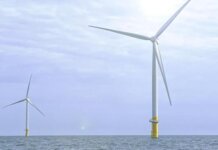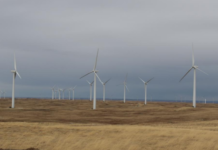The failure to efficiently transfer weather risk has left wind energy stakeholders with untapped asset values totaling an estimated $56 billion globally, according to new analysis from renewable energy underwriter GCube Underwriting Ltd.
In a new report, GCube is emphasizing the long-term financial impact of wind-speed volatility on portfolio and project revenues. It also highlights the size of the market for weather risk transfer (WRT) mechanisms in the sector.
The report, “Gone with the Wind: An Asset Manager’s Guide to Mitigating Wind Power Resource Risk,” outlines the scale of the threat posed by resource underperformance to wind energy operators and investors around the world.
According to GCube, well documented recent wind speed lulls in established markets such as North America, Europe and Australia – often triggered by unforeseen and widespread climatic phenomena – have affected the ability of operational assets to deliver the outputs that were forecast by resource analysts prior to their construction.
These deviations from expected performance not only impact financial results for project owners, independent power producers and utilities but also result in damaging rating downgrades. Furthermore, in high-capacity regions such as Texas, where the grid is highly dependent on wind energy, production shortfalls have created energy security concerns, the report adds.
In turn, according to the underwriter, these issues demonstrate that resource underperformance has now surpassed mechanical breakdown and component damage as the major obstacle to achieving bankable wind energy projects.
GCube estimates that for a 50 MW onshore wind farm worth $80 million, the successful mitigation or transfer of weather risk could achieve a total net present value increase of $5.8 million. By comparison, the same 50 MW asset with comprehensive operational all risks insurance coverage in place is likely to see just $1.5 million, on average, of financial losses throughout its lifetime (attributed to technical failure and associated downtime).
Following major recent advances in data measurement and analysis, the insurance market has responded to this bankability challenge with the development of products that offer long-term re-allocation of weather risk, smoothing of project revenues and the opportunity to unlock considerable untapped asset value, says GCube.
These WRT mechanisms, explained simply, provide compensation in years of resource underperformance – mitigating the financial impact of long-term wind speed fluctuations. In turn, they create certainty in revenue forecasts, conferring a number of benefits for financing and refinancing, alongside the broader risk management, investor confidence and reputational advantages that derive from stable returns, according to the underwriter.
“As the wind energy sector has matured, a number of the main threats to profitability have increasingly been managed,” comments Geoffrey Taunton-Collins, weather risk analyst at GCube and co-author of the report. “The reliability of turbine and other technologies has rapidly improved, and the risk of malfunction or damage to them has been covered by more traditional insurance products.
“Now, the industry has realized that underperformance represents the single biggest remaining challenge that stakeholders face during the lifetime of a project,” he continues. “With the recent rise in refinancing and significant M&A activity predicted for the first half of 2017, particularly in the United States, meeting the resource risk challenge has moved up the agenda as the sector wakes up to the substantial opportunities transferring weather risk effectively can provide for value creation.”




